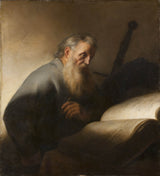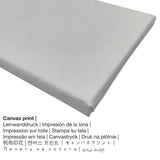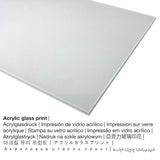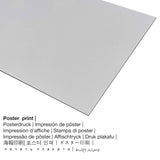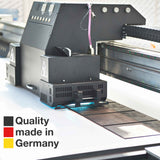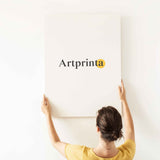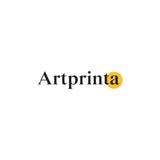Jan Lievens, 1627 - Pọl onyeozi - mbipụta nka mara mma
Ụtụ gụnyere. Mbupu gbakọrọ na ndenye ọpụpụ.
General information from the museum (© - by Nationalmuseum Stockholm - National Museum nke Stockholm)
English: New acquisition, September 2012 Painting of St Paul by Jan Lievens Nationalmuseum's extensive collection of Dutch old masters has been enriched with the addition of a leading work by Jan Lievens (1607–1674). He was born in Leiden, where he joined the studio of Joris van Schooten in 1615, before moving to Amsterdam to work under Pieter Lastman around 1619–1621. In the late 1620s, Lievens worked closely with Rembrandt, which is why their works can sometimes be difficult to tell apart. In 1632, Lievens travelled to England, where he received several commissions from the English Royal Court, after which he moved to Antwerp, where he joined the city's Guild of St Luke. From 1643 until his death in 1674, Lievens lived and worked mainly in Amsterdam, with the exception of occasional stays in The Hague and his birthplace of Leiden. The monumental painting of St Paul is a typical work by Lievens from the period in Leiden when he worked closely with Rembrandt. Similarities with Rembrandt's paintings from the same time, which is around 1627–1629, can be seen in terms of both subject and composition, but also in the way that Lievens uses light. This painting is a case in point, with its subject of the apostle in half length, its powerful application of light and shadow, with a light source illuminating the scene from the left, and the realistic, empathetic depiction of St Paul's wrinkled face and hands. St Paul is portrayed by Lievens as a learned old man who is deep in thought as he continues writing in a large open book. Research into Jan Lievens' painting of St Paul has dated it at around 1627–1629. The work originally came to Sweden through the prominent art collector Gustav Adolf Axelsson Sparre (1746–1794). The Sparre collection is considered to have been one of the best in the country during the 18th century, ranking alongside those of King Gustav III, Queen Lovisa Ulrika and Count Carl Gustaf Tessin. Nationalmuseum has been able to purchase this important painting by Jan Lievens with the help of a donation from the Wiros Fund. The acquisition from the art collection at Wanås Castle, where the remaining works of the Sparre collection are housed, is one of the museum's most significant of recent years. The acquisition is on show in the Dutch and Flemish 17th Century painting gallery on the second floor. Den åldrade, vitskäggige aposteln Paulus porträtteras här som teolog och nytestamentlig författare. Han är avbildad i halvfigur och trekvartsprofil, vänd åt höger, och iklädd en gråblå mantel. I vänster hand håller han en gåspenna, medan han sitter lutad över en uppslagen foliant, försjunken i djupa grubblerier. Bakgrunden utgörs av en neutral gråaktig vägg; ett varmt gyllene ljus lyser upp gestalten från vänster. Målningen ingår i en grupp verk som Lievens utförde under sina tidiga år i Leiden. Motivet med den lärde åldringen i sin studerkammare är gemensam för denna grupp, liksom kompositionen i halvfigur och den kraftiga ljuskällan, som lyser upp scenen från vänster. Under dessa år hade Lievens nära kontakt med Rembrandt, och det var han, som inspirerat kollegan till motivtypen, en lärd gammal man. Detsamma gäller den speciella ljusföringen, som erinrar om Rembrandts självporträtt från 1620-talets slut. Utmärkande för Lievens […] är formatet i naturlig storlek, kompositionen med den stora gestalten i bildens förgrund och framställningen av aposteln i trekvartsprofil (Rembrandt och hans tid, Nationalmuseum, Stockholm 1992-93, nr 96) Beskrivning som månadens nyförvärv, September 2012 Målning föreställande aposteln Paulus, av Jan Lievens Nationalmuseums omfattande samling av äldre holländskt måleri har berikats med ett av Jan Lievens (1607-1674) främsta verk. Han föddes i Leiden där han 1615 studerade för Joris van Schooten, och därefter hos Pieter Lastman i Amsterdam mellan cirka 1619-1621. På slutet av 1620-talet arbetade Lievens nära Rembrandt, varför deras verk från den tiden ofta är svåra att särskilja. År 1632 reste Lievens till England där han fick flera uppdrag av det engelska hovet, för att därefter bege sig till Antwerpen där han blev medlem av stadens målargille. Från 1643 till och med sin död 1674 levde och verkade Lievens framförallt i Amsterdam, med undantag för ett antal vistelser i Haag och i födelsestaden Leiden. Den monumentala målningen föreställande aposteln Paulus är ett karakteristiskt verk av Lievens från den period i Leiden då han samverkade nära med Rembrandt. Ett släktskap med Rembrandts måleri från samma tid, det vill säga cirka 1627-29, märks både motiviskt och kompositionellt, men också i den ljusbehandling som Lievens använt sig av. Här kan särskilt framhållas motivet med aposteln framställd i halvfigur, den kraftfulla ljus- och skuggbehandlingen med en ljuskälla som lyser upp scenen från vänster liksom den inkännande och av realism präglade skildringen av Paulus fårade ansikte och grova hand. Paulus framställs av Lievens som en lärd gammal man som är försjunken i tankar då han är i färd med att fortsätta sitt skrivande i en stor, uppslagen bok. Jan Lievens målning avbildande aposteln Paulus har i forskningen om konstnären daterats till åren omkring 1627-29. Målningen kom ursprungligen till Sverige genom den betydande konstsamlaren Gustav Adolf Axelsson Sparre (1746-1794). Den så kallade Sparreska samlingen räknas idag till en av de främsta i landet under 1700-talet vid sidan av Gustav III:s, Lovisa Ulrikas och Carl Gustaf Tessins konstsamlingar. Nationalmuseum har haft möjlighet att förvärva den betydande målningen av Jan Lievens med hjälp av donationsmedel från Wirosfonden. Förvärvet från konstsamlingen på Wanås, där de återstående delarna av den Sparreska samlingen finns idag, är ett av de mest betydande som Nationalmuseum har gjort på senare år.
Ozi ndabere ngwaahịa nka
Nkà nka ochie a Pọl onyeozi onye na-ese ihe mere ya Jan Lievens. Ụdị izizi ahụ nwere nha: Ogologo: 119 cm (46,8 ″); Ogologo: 108 cm (42,5 ″). E wezụga nke ahụ, a pụrụ ịhụ mpempe nka na n'ime National Museum nke Stockholm nchịkọta dijitalụ na Stockholm, Stockholm County, Sweden. Site n'ikike nke: Nationalmuseum Stockholm & Wikimedia Commons (ikike ngalaba ọha).Kridi n'obi nke artpiece bụ ndị a: . Ọzọkwa, nhazi nke mmepụta dijitalụ bụ Eserese ya na oke nke 1: 1.2, nke pụtara na ogologo bụ 20% mkpụmkpụ karịa obosara. The painter Jan Lievens was a European artist, whose art style can be classified as Baroque. The artist was born in the year 1607 in Leiden and died at the age of 67 na 1674.
Họrọ ihe ị ga-achọ idobe n'ụlọ gị
Maka mbipụta nka ọ bụla anyị na-enye ihe & nha dị iche iche. Ka ị kwekọọ n'ihe ị chọrọ nke ọma, ị nwere ike họrọ n'ime nhọrọ nhazi ngwaahịa ndị a:
- Kwaaji: A canvas direct print is a printed canvas stretched on a wood stretcher. It generates a special look of three dimensionality. Furthermore, a canvas makes a lovely and comfortable effect. Canvas prints are relatively low in weight, meaning that it is easy and straightforward to hang up the Canvas print without the help of any wall-mounts. Therefore, a canvas print is suited for all types of walls.
- Metal (aluminium debond mbipụta): An Aluminium Dibond print is a print material with a true effect of depth, which creates a contemporary look with a non-reflective surface. A direct Aluminium Dibond Print is your ideal introduction to fine prints with alu. The colors of the print are luminous and bright in the highest definition, fine details are crisp, and the print has a a matte appearance you can literally feel.
- Mbipụta akwụkwọ mmado (ihe kwaaji): The Artprinta poster print is a UV printed cotton canvas paper with a slightly roughened surface structure, which resembles the actual artwork. It is suited for placing the art print with a special frame. Please note, that depending on the absolute size of the poster print we add a white margin between 2-6cm round about the painting, which facilitates the framing with your custom frame.
- Ugogbe acrylic ebipụtara: An acrylic glass print, which is sometimes labelled as a print on plexiglass, will convert an original artwork into amazing home decoration and is a distinct alternative option to canvas and dibond fine art prints. The great benefit of a plexiglass fine art copy is that contrasts and small artwork details will be more visible because of the subtle gradation in the print. The plexiglass with real glass coating protects your selected art print against light and external influences for many decades.
Nchịkọta dị mkpirikpi nke onye na-ese ihe
| Ihe nkiri: | Jan Lievens |
| okike nke onye nka: | nwoke |
| Nationality: | Dutch |
| Ọrụ onye na-ese ihe: | onye na-ese ihe |
| Obodo obibi: | mba netherland |
| Otu nka: | nna ukwu ochie |
| Ụdị nke onye na-ese ihe: | Baroque |
| Ndụ: | 67 afọ |
| Afọ amụrụ: | 1607 |
| Obodo amụrụ: | Leiden |
| Afọ ọnwụ: | 1674 |
| Nwuru na (ebe): | Amsterdam |
Data nka ahaziri
| Aha nka nka: | "Pọl onyeozi" |
| Nhazi: | sere |
| Okwu mkpokọta: | nka ochie |
| Century: | 17th narị afọ |
| Emepụtara n'afọ: | 1627 |
| Afọ nka: | gbara afọ 390 |
| Akụkụ nke ọrụ nka mbụ: | Ogologo: 119 cm (46,8 ″); Ogologo: 108 cm (42,5 ″) |
| Ụlọ ihe ngosi nka / mkpokọta: | National Museum nke Stockholm |
| Ebe ebe ngosi nka: | Stockholm, Obodo Stockholm, Sweden |
| Ebe nrụọrụ weebụ ihe ngosi nka: | National Museum nke Stockholm |
| License: | ngalaba ọha |
| Site n'aka: | Nationalmuseum Stockholm na Wikimedia Commons |
Nkọwapụta ihe
| Bipụta ụdị ngwaahịa: | ọmarịcha nka |
| Usoro mmeghari: | dijitalụ mmeputakwa |
| Usoro nhazi: | Mbipụta UV ozugbo |
| Mmalite ngwaahịa: | emepụtara na Germany |
| Stockdị ngwaahịa: | mmepụta ihe na-achọ |
| Eji ngwaahịa emebere: | art ebipụta gallery, mgbidi ịchọ mma |
| Nhazi nke ihe nka: | usoro eserese |
| Ụdị anya: | 1: 1.2 |
| Mmetụta akụkụ: | ogologo bụ 20% mkpụmkpụ karịa obosara |
| Akụrụngwa dị: | Mbipụta iko acrylic (nke nwere ezigbo mkpuchi iko), mbipụta akwa akwa, mbipụta akwụkwọ mmado (akwụkwọ kwaaji), mbipụta ọla (aluminium dibbond) |
| Nhọrọ nha nha mbipụta kanvas (akwa akwa na etiti ihe ndọtị): | 50x60cm - 20x24", 100x120cm - 39x47", 150x180cm - 59x71" |
| Mbipụta iko acrylic (nwere ezigbo mkpuchi iko) dị iche iche: | 50x60cm - 20x24", 100x120cm - 39x47", 150x180cm - 59x71" |
| Ụdị akwụkwọ mmado (akwụkwọ kwaaji) dị iche iche: | 50x60cm - 20x24", 100x120cm - 39x47" |
| Mbipụta aluminom (ihe alumini debond ihe): | 50x60cm - 20x24", 100x120cm - 39x47" |
| Igwe onyonyo: | ngwaahịa anaghị emebi emebi |
Nkwupụta iwu: We try what we can in order to depict the art products with as many details as it is possible and to illustrate them visually on the respective product detail pages. Nevertheless, some pigments of the printing material, as well as the print result might diverge to a certain extent from the presentation on the device's monitor. Depending on the settings of your screen and the quality of the surface, not all colors are printed 100% realistically. In view of the fact that all art reproductions are processed and printed by hand, there might also be slight deviations in the exact position and the size of the motif.
© nwebisiinka, Artprinta (www.artprinta.com)

